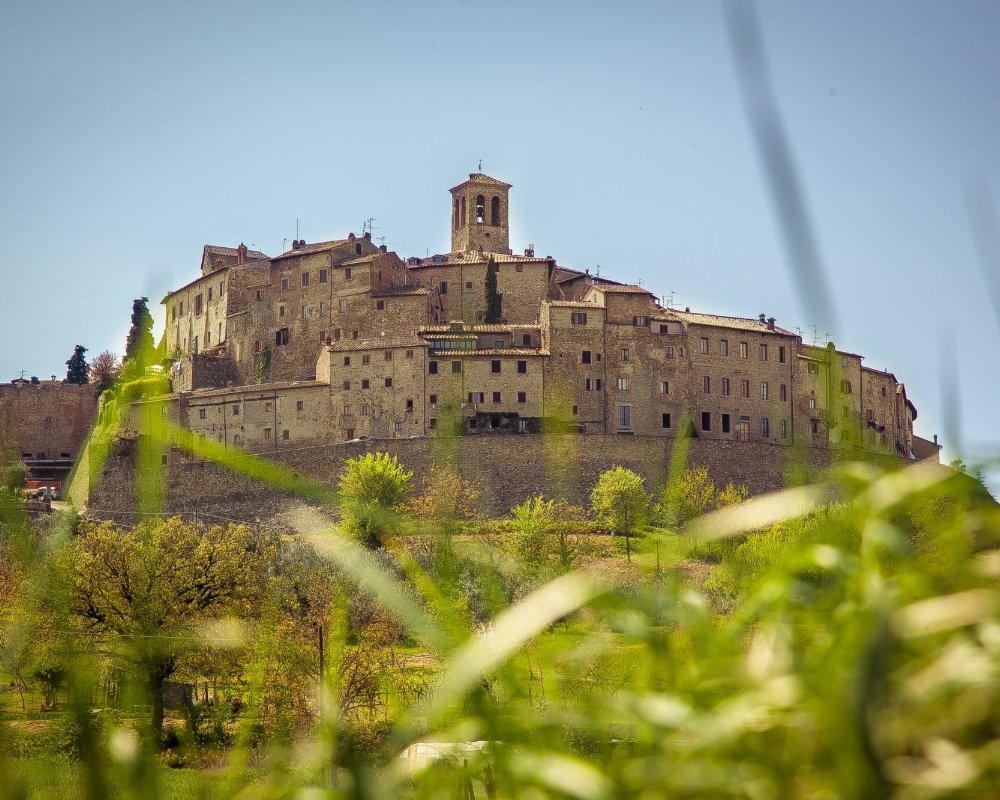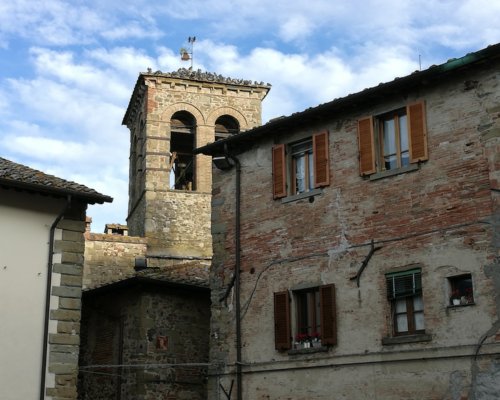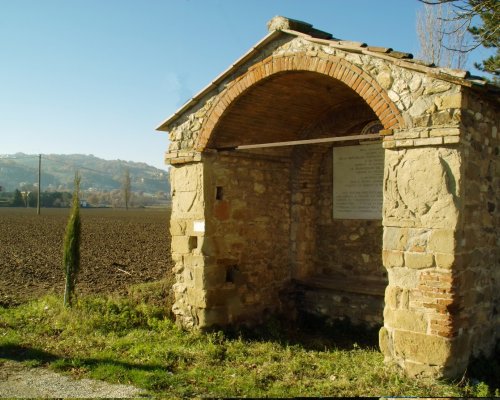An itinerary to discover the Battle of Anghiari, made famous by Leonardo da Vinci's lost painting
On June 29, 1440, the splendid village of Anghiari in the Tuscan Valtiberina was the setting of a famous battle between Milanese and Florentine peoples: to celebrate the memory of the Republic of Florence’s victory, a large painting was commissioned to Leonardo da Vinci. It was supposed to be hanged on a wall in the Salone del Cinquecento of Palazzo Vecchio, in Florence.
A pleasant journey through art, history and green landscapes is an opportunity to learn about the loss of this artwork and discover, by walking or cycling, the places that have been the background of the famous battle.
The itinerary starts from the historic center of Anghiari, where you can visit the Battle Museum, which is located in Palazzo del Marzocco, with many interesting archaeological finds and documents of local history, most of all of the battle. The evidence is told from a historical-military and also artistic point of view, with images, sketches and multimedia reconstructions that offer a complete overview of the event that took place under the town walls.
Explore the narrow streets, churches and towers of one of the most beautiful villages in Italy, then leave Anghiari crossing Porta Sant'Angelo and get prepared for a quiet walk of about an hour to reach the “Maestà della Vittoria”, the exact place where in the past the garrison guided by the Florentines defeated the Milanese people led by Filippo Maria Visconti.
The itinerary starts from the historic center of Anghiari, where you can visit the Battle Museum, which is located in Palazzo del Marzocco, with many interesting archaeological finds and documents of local history, most of all of the battle. The evidence is told from a historical-military and also artistic point of view, with images, sketches and multimedia reconstructions that offer a complete overview of the event that took place under the town walls.
Explore the narrow streets, churches and towers of one of the most beautiful villages in Italy, then leave Anghiari crossing Porta Sant'Angelo and get prepared for a quiet walk of about an hour to reach the “Maestà della Vittoria”, the exact place where in the past the garrison guided by the Florentines defeated the Milanese people led by Filippo Maria Visconti.
Following the road under the walls, you enter the famous straight road that, built at the end of the fourteenth century, still connects Anghiari with Sansepolcro. Arrived in the flat land you can see the historical cultivations of tobacco (where the raw material for the famous Tuscan cigars is produced), traces of the Roman centuriatio (the way the land was divided into smaller pieces) and the ancient Byzantine church of Santo Stefano.
A little further you’ll see one of the ancient mills (no longer working today) built on the so called Reglia, a ditch that was fundamental for the battle outcome. Walking along its border, surrounded by cultivated fields, with rows of grapevines here and there, you’ll reach Maestà di Santa Maria. It is a small chapel, built in 1441 to commemorate the victory: today it is the starting point of a race called the Palio della Vittoria, which is held on June 29th each year.
Following the road under the walls, you enter the famous straight road that, built at the end of the fourteenth century, still connects Anghiari with Sansepolcro. Arrived in the flat land you can see the historical cultivations of tobacco (where the raw material for the famous Tuscan cigars is produced), traces of the Roman centuriatio (the way the land was divided into smaller pieces) and the ancient Byzantine church of Santo Stefano.
A little further you’ll see one of the ancient mills (no longer working today) built on the so called Reglia, a ditch that was fundamental for the battle outcome. Walking along its border, surrounded by cultivated fields, with rows of grapevines here and there, you’ll reach Maestà di Santa Maria. It is a small chapel, built in 1441 to commemorate the victory: today it is the starting point of a race called the Palio della Vittoria, which is held on June 29th each year.
The route for expert walkers or cyclists continues on dirt roads to Sansepolcro, that was the starting point of the Milanese soldiers. Walk along the Tiber river, that here is lush, clean and alive.
This town - which went through a splendid period during the Renaissance - is linked to the name of another great Tuscan artist, Piero della Francesca, whose works can be seen in the Museo Civico, for example the triptych of the Misericordia and the Resurrection. In the village, you can also visit the painter's house and the Duomo, which preserves a particular wooden crucifix. At this point, we are ready to go back again to Anghiari, full of new acquaintances and satisfied by a walk in history.
For more information on the experiences of the battle sites, contact the Museo della Battaglia di Anghiari.
The route for expert walkers or cyclists continues on dirt roads to Sansepolcro, that was the starting point of the Milanese soldiers. Walk along the Tiber river, that here is lush, clean and alive.
This town - which went through a splendid period during the Renaissance - is linked to the name of another great Tuscan artist, Piero della Francesca, whose works can be seen in the Museo Civico, for example the triptych of the Misericordia and the Resurrection. In the village, you can also visit the painter's house and the Duomo, which preserves a particular wooden crucifix. At this point, we are ready to go back again to Anghiari, full of new acquaintances and satisfied by a walk in history.
For more information on the experiences of the battle sites, contact the Museo della Battaglia di Anghiari.


